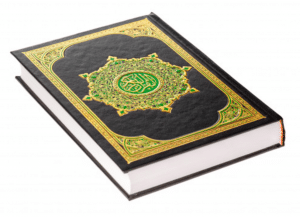In Roman Catholicism, it is a common practice to direct prayers toward images of Jesus or the crucifix, as well as images of saints, angels, and the Virgin Mary. One common defense of this practice is to claim that such prayers are not really offered to the image itself, but rather through the image to God. Therefore, it is claimed, such a practice is not idolatrous or unbiblical because the prayers are ultimately offered to God alone. Bowing toward such images in prayers or lighting candles and burning incense before them is really just a way of offering worship to God through the image. Even if the image represents an angel or a human saint, the idea is that these holy messengers will bring the prayer to God on our behalf. The prayers, it is said, are ultimately offered exclusively to God. So, while the Scriptures are filled with many admonitions like:
“You shall not make for yourselves idols, nor shall you set up for yourselves an image or a sacred pillar, nor shall you place a figured stone in your land to bow down to it; for I am the Lord your God,” (Leviticus 26:1).
These commands, we are told, have nothing to do with the Roman Catholic practice of setting up images and bowing down to them because the Bible only forbids this if you are worshiping the image as a separate god. If you are prostrating yourself before a statue and directing your prayers toward it as a way of ultimately praying to God, that is said to be a completely different thing with which the Scriptures take no issue. A closer examination, however, shows that the Bible does not limit itself to condemning the worship of idols of false gods. It deals directly with the idea of making images that represent God Himself and offering our worship to Him vicariously by venerating such images. For example, before entering the promised land, God warned Israel through Moses:
“So watch yourselves carefully, since you did not see any form on the day the Lord spoke to you at Horeb from the midst of the fire, so that you do not act corruptly and make a graven image for yourselves in the form of any figure, the likeness of male or female, the likeness of any animal that is on the earth, the likeness of any winged bird that flies in the sky, the likeness of anything that creeps on the ground, the likeness of any fish that is in the water below the earth. And beware not to lift up your eyes to heaven and see the sun and the moon and the stars, all the host of heaven, and be drawn away and worship them and serve them, those which the Lord your God has allotted to all the peoples under the whole heaven,” (Deuteronomy 4:15-19).
And again:
“So watch yourselves, that you do not forget the covenant of the Lord your God which He made with you, and make for yourselves a graven image in the form of anything against which the Lord your God has commanded you,” (Deuteronomy 4:23).
Some Catholics object that this command was temporary since at that time Israel “did not see any form on the day the Lord spoke to you at Horeb from the midst of the fire,” but God later appeared visibly to the prophets and finally in the person of Jesus Christ. This rule, they claim, no longer applies since God chose to reveal Himself invisible images. But if that were the case, Moses was wrong to have written it in Deuteronomy, for God had already revealed Himself visibly even then! God had appeared to Abraham as a “smoking oven and flaming torch” (Genesis 15:17) and even in the form of a man (Genesis 18). Jacob, too, saw God appear in the likeness of a man and plainly declared, “I have seen God face to face, and yet my life has been preserved!” (Genesis 32:30). The point in Deuteronomy is not that God had never appeared in any visible form. Clearly, God had done so before several times. Here, however, Moses explains that God chose to speak to them formlessly from the mount precisely to illustrate the point that they were not to worship God by representing Him with images. God may decide to take a form whenever He wishes, but He is above and beyond any created form, and we are not to worship Him by bowing and praying to things that we form ourselves, even in His name.
Likewise, the prophet Isaiah “saw the Lord sitting on a throne lofty and exalted,” (Isaiah 6:1) This did not hinder Isaiah from arguing against idolatry, in part, on the basis that there is no image or likeness to which the true God can be compared:
“To whom then will you liken God? Or what likeness will you compare with Him?” (Isaiah 40:18).
The chapter goes on to contrast the formed images that the idolaters worship to the Creator who formed all things and to whom no created thing is comparable. Idolatry isn’t only foolish because it involves worshiping other things rather than God. It is foolish because there is no likeness in creation to which we can rightly compare God. Even if the image we are worshiping is meant to be an image of God Himself, Moses and Isaiah both condemn it. Even after the incarnation, when God took on human flesh in Jesus Christ, Paul makes a similar point to the idolaters of Athens in Acts 17:22-31. His argument is not merely that the gods whom the Greeks worship are not really gods. He goes further, showing the absurdity of the very idea that we could represent the God who formed all things by means of anything that a human could form.
In fact, there are instances in the Bible where people created images of the LORD meant as direct objects of veneration, and such passages always clearly denounce this as sin. Most famously, when Moses was on the mount receiving the Law, the people of Israel turned to Aaron who made them an image of a golden calf to which they were to direct their worship. Notice, however, what Aaron clearly says about which God this calf was meant to portray:
“Then all the people tore off the gold rings which were in their ears and brought them to Aaron. He took this from their hand, and fashioned it with a graving tool and made it into a molten calf; and they said, ‘This is your god, O Israel, who brought you up from the land of Egypt.’ Now when Aaron saw this, he built an altar before it; and Aaron made a proclamation and said, ‘Tomorrow shall be a feast to the LORD,'” (Exodus 32:3-5).
The calf wasn’t supposed to be some new foreign god. It was supposed to be Israel’s God who brought them out of Egypt, and the feast before the calf was said to be a “feast to the LORD.” It does not appear that they intended to create a new god entirely distinct from the LORD. The image of the calf was meant to be an image of God, and the veneration they directed toward the calf was supposed to be reverence for the name of the LORD. Their woefully misguided plan seems to have been to worship the one, true God through this sculpture of a calf. God did not receive such worship, however, and regarded it as a grave sin. Likewise, in the time of the Judges we are told of an episode where:
“There was a man of the hill country of Ephraim whose name was Micah. He said to his mother, ‘The eleven hundred pieces of silver which were taken from you, about which you uttered a curse in my hearing, behold, the silver is with me; I took it.’ And his mother said, ‘Blessed be my son by the LORD.’ He then returned the eleven hundred pieces of silver to his mother, and his mother said, ‘I wholly dedicate the silver from my hand to the LORD for my son to make a graven image and a molten image; now therefore, I will return them to you.’ So when he returned the silver to his mother, his mother took two hundred pieces of silver and gave them to the silversmith who made them into a graven image and a molten image, and they were in the house of Micah. And the man Micah had a shrine and he made an ephod and household idols and consecrated one of his sons, that he might become his priest. In those days there was no king in Israel; every man did what was right in his own eyes,” (Judges 17:1-6).
Notice, yet again, that the man dedicated the silver to the LORD and made the image for the purpose of worshiping the LORD. Later in the story, he even appoints a Levite priest to serve before his silver image and rejoices that the LORD will certainly be pleased with him and bless him for this. He honestly thought that this was a proper way to worship God. The text uses this as an example of the sinful ignorance of the time of the Judges. The Bible plainly and repeatedly makes it clear that God does not want His people to worship Him by bowing before and praying to images, even if their prayers to the images are meant as prayers to God alone. He is not pleased by such worship. While the tabernacle and temple certainly did contain pictures and sculptures of various kinds, the people were never instructed (nor permitted) to pray or burn incense to these images. Such works of art and statuary were not vicarious objects of worship or recipients of Israel’s prayers. We are to pray to God directly, not through images of created things.





